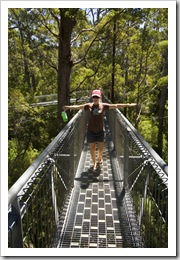
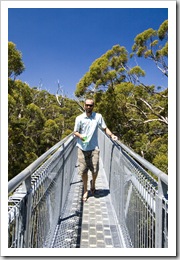 It was more beautiful beaches, great wineries, quaint country towns and some fantastic mountains as we headed across Western Australia’s Great Southern region over the past week or so. From Windy Harbor in D’entrecasteaux National Park we headed back inland, across Shannon National Park and toward Denmark.
It was more beautiful beaches, great wineries, quaint country towns and some fantastic mountains as we headed across Western Australia’s Great Southern region over the past week or so. From Windy Harbor in D’entrecasteaux National Park we headed back inland, across Shannon National Park and toward Denmark. 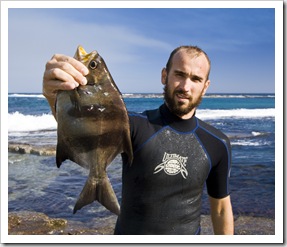 The famous Valley of the Giants Treetop Walk is located a few kilometers east of Walpole, even though it’s probably one of the most touristy attractions in the area we figured we’d better stop off and see what it’s all about. It was quite fun walking through the canopy of the massive Karri Eucalypts, the suspended walkways at one point had us 40 meters (131 feet) off the ground providing some brilliant views of the surrounding forest and agricultural areas. We spent a night at Peaceful Bay (S35°02.331′ E116°55.824′), a protected stretch of coastline east of Nornalup where we found a good snorkeling site and I snagged a nice Banded Sweep for Lisa’s dinner. Similar to Windy Harbour, there’s not much to peaceful bay except for a small camping area, a general store and collection of fishing shacks but it’s a beautiful spot all the same.
The famous Valley of the Giants Treetop Walk is located a few kilometers east of Walpole, even though it’s probably one of the most touristy attractions in the area we figured we’d better stop off and see what it’s all about. It was quite fun walking through the canopy of the massive Karri Eucalypts, the suspended walkways at one point had us 40 meters (131 feet) off the ground providing some brilliant views of the surrounding forest and agricultural areas. We spent a night at Peaceful Bay (S35°02.331′ E116°55.824′), a protected stretch of coastline east of Nornalup where we found a good snorkeling site and I snagged a nice Banded Sweep for Lisa’s dinner. Similar to Windy Harbour, there’s not much to peaceful bay except for a small camping area, a general store and collection of fishing shacks but it’s a beautiful spot all the same.
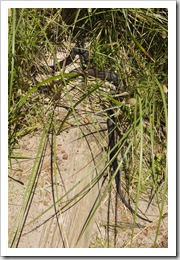
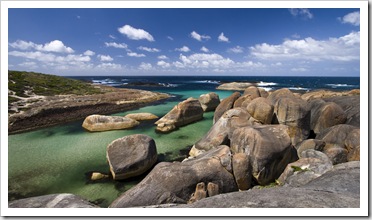 The drive into Denmark (S34°57.650′ E117°21.439′) was another one of those stretches of road where we were a little overwhelmed with all the spots to stop along the way. We visited The Toffee Factory, Elephant Rocks in William Bay National Park, Somerset Hill Winery, an alpaca farm and the Denmark Farmhouse cheese factory. And that was just in the morning! The coastline enclosed by William Bay National Park was unreal, definitely some of the most beautiful coastline I’ve ever seen, the turquoise waters along the shore receding to the deep blue of the Southern Ocean was so picturesque. Had it not been for the inclement weather we’d been dodging for the better part of a week, Elephant Rocks would have been a great spot for snorkeling. The water was so clear we could see the fish swimming in the protected pools. I had a bit of a fright (‘bit’ might be slightly understated…) when I rounded the
The drive into Denmark (S34°57.650′ E117°21.439′) was another one of those stretches of road where we were a little overwhelmed with all the spots to stop along the way. We visited The Toffee Factory, Elephant Rocks in William Bay National Park, Somerset Hill Winery, an alpaca farm and the Denmark Farmhouse cheese factory. And that was just in the morning! The coastline enclosed by William Bay National Park was unreal, definitely some of the most beautiful coastline I’ve ever seen, the turquoise waters along the shore receding to the deep blue of the Southern Ocean was so picturesque. Had it not been for the inclement weather we’d been dodging for the better part of a week, Elephant Rocks would have been a great spot for snorkeling. The water was so clear we could see the fish swimming in the protected pools. I had a bit of a fright (‘bit’ might be slightly understated…) when I rounded the 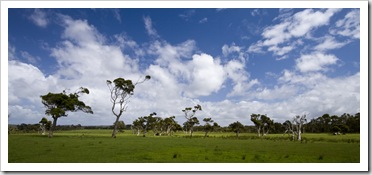 corner on the trail to Elephant Rocks and almost stepped on a brown snake (pictured here) bathing itself in a patch of morning sun. Don’t
corner on the trail to Elephant Rocks and almost stepped on a brown snake (pictured here) bathing itself in a patch of morning sun. Don’t 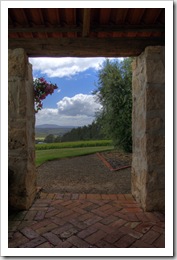
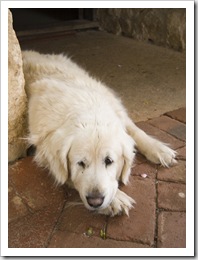 fancy a nip from the world’s second most venomous snake!
fancy a nip from the world’s second most venomous snake!
The hills surrounding Denmark were pretty magic as well, dotted with art galleries and wineries there was no shortage of spots to visit. We tasted at Somerset Hill Winery, a beautiful 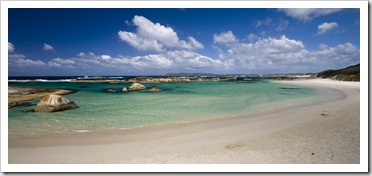 vineyard overlooking the surrounding countryside that boasted some great Semillons that would have been interesting to age for 10 years (so says our resident winemaker!). We couldn’t wait that long, however, and enjoyed our bottle with some fresh fish. It was fun to visit the Denmark Farmhouse cheese factory, the week earlier we’d tried to make it to the creamery in the tiny town of Northcliffe but missed closing time by 30 minutes. Some of the cheeses at the Denmark Farmhouse were exquisite, we walked away with some of their tasty feta and a block of goat’s cheese.
vineyard overlooking the surrounding countryside that boasted some great Semillons that would have been interesting to age for 10 years (so says our resident winemaker!). We couldn’t wait that long, however, and enjoyed our bottle with some fresh fish. It was fun to visit the Denmark Farmhouse cheese factory, the week earlier we’d tried to make it to the creamery in the tiny town of Northcliffe but missed closing time by 30 minutes. Some of the cheeses at the Denmark Farmhouse were exquisite, we walked away with some of their tasty feta and a block of goat’s cheese.
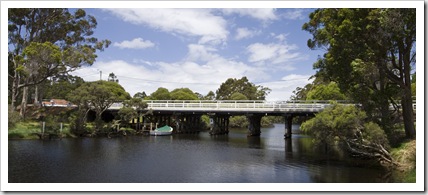
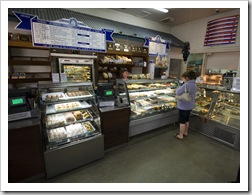 Denmark itself was a great little town, somewhere we can picture both of our mothers enjoying the art galleries, coffee houses, restaurants, gift stores and health food establishments. Denmark Bakery is the most recent addition to my list of Australia’s Best Bakeries, the storefront is covered with awards from the Perth Royal Show and they were definitely well deserved. One of the galleries in Denmark had some of the most beautiful wooden tables and furniture we’d ever seen, definitely jotting this place down on our list
Denmark itself was a great little town, somewhere we can picture both of our mothers enjoying the art galleries, coffee houses, restaurants, gift stores and health food establishments. Denmark Bakery is the most recent addition to my list of Australia’s Best Bakeries, the storefront is covered with awards from the Perth Royal Show and they were definitely well deserved. One of the galleries in Denmark had some of the most beautiful wooden tables and furniture we’d ever seen, definitely jotting this place down on our list  should we ever need a new dining table down the road… We spent the night just south of Denmark at Ocean Beach, the closest beach to Denmark’s town centre. Lisa was as giddy as a
should we ever need a new dining table down the road… We spent the night just south of Denmark at Ocean Beach, the closest beach to Denmark’s town centre. Lisa was as giddy as a 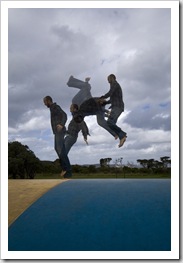
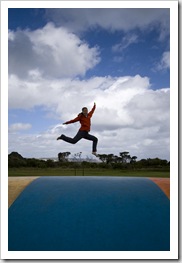 school kid when she spotted an air-filled trampoline out the front of the caravan park in which we stayed, we both relived a few childhood experiences as we bounced around. The Wilson Inlet, on which Denmark is located, had a nice walking trail around its edge and the beach at Ocean Beach was another in the string of fantastic beaches that the southern coast has to offer. We threw a line in near the mouth of the Wilson Inlet but our fishing was cut short after Lisa ended up on her back, drenched in seawater after tripping whilst scurrying backwards to escape an oncoming wave! Once I’d ran down the beach to check that she was okay we both had quite a good laugh before trudging back to the caravan park for a much-needed hot shower.
school kid when she spotted an air-filled trampoline out the front of the caravan park in which we stayed, we both relived a few childhood experiences as we bounced around. The Wilson Inlet, on which Denmark is located, had a nice walking trail around its edge and the beach at Ocean Beach was another in the string of fantastic beaches that the southern coast has to offer. We threw a line in near the mouth of the Wilson Inlet but our fishing was cut short after Lisa ended up on her back, drenched in seawater after tripping whilst scurrying backwards to escape an oncoming wave! Once I’d ran down the beach to check that she was okay we both had quite a good laugh before trudging back to the caravan park for a much-needed hot shower.
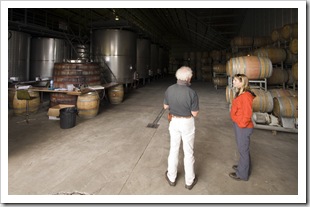
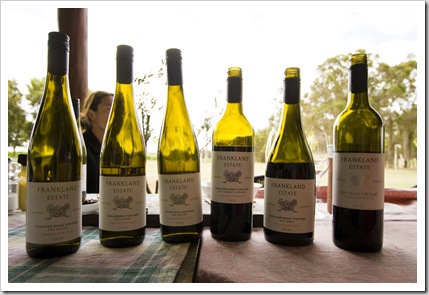 My dad connected us with an old friend of his who owns Frankland Estate winery in-between the towns of Rocky Gully and Frankland, about an hour inland from Denmark. We called ahead the day before, organized to arrive for lunch and were treated to a tour from owner and winemaker Barrie Smith as well as a gourmet sit-down lunch with the winery staff and Barrie’s daughter Elizabeth, who’s also one of the winemakers. A beautiful piece of property nestled amongst the rolling hills of Frankland and such hospitality from Barrie and his daughter. We sat there for an hour or two tasting through their fantastic wines paired with some delectable meats and cheeses. Our visit to Frankland Estate coincided with Thanksgiving in the States so Lisa was excited to be able to enjoy a sit-down, communal meal on the day of the year when every other year of her life she’d eaten turkey with her family.
My dad connected us with an old friend of his who owns Frankland Estate winery in-between the towns of Rocky Gully and Frankland, about an hour inland from Denmark. We called ahead the day before, organized to arrive for lunch and were treated to a tour from owner and winemaker Barrie Smith as well as a gourmet sit-down lunch with the winery staff and Barrie’s daughter Elizabeth, who’s also one of the winemakers. A beautiful piece of property nestled amongst the rolling hills of Frankland and such hospitality from Barrie and his daughter. We sat there for an hour or two tasting through their fantastic wines paired with some delectable meats and cheeses. Our visit to Frankland Estate coincided with Thanksgiving in the States so Lisa was excited to be able to enjoy a sit-down, communal meal on the day of the year when every other year of her life she’d eaten turkey with her family.
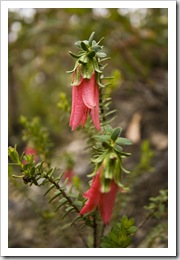
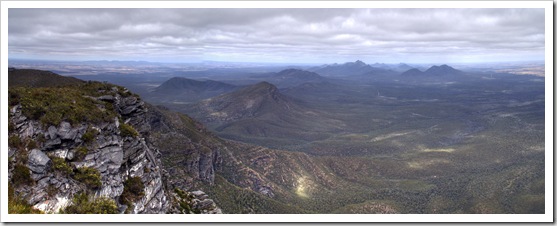 Frankland Estate was on the way inland to Stirling Range National Park (S34°24.058′ E118°06.129′). The mountains of the Stirling Range rise out of the surrounding wheat fields like jagged teeth, a collection of majestic peaks stretching for close to 70 kilometers across the plains. The mountains are home to a dizzying array of flora and fauna and are recognized internationally as one of the world’s most biodiverse regions. There are a number of plants, like the red
Frankland Estate was on the way inland to Stirling Range National Park (S34°24.058′ E118°06.129′). The mountains of the Stirling Range rise out of the surrounding wheat fields like jagged teeth, a collection of majestic peaks stretching for close to 70 kilometers across the plains. The mountains are home to a dizzying array of flora and fauna and are recognized internationally as one of the world’s most biodiverse regions. There are a number of plants, like the red 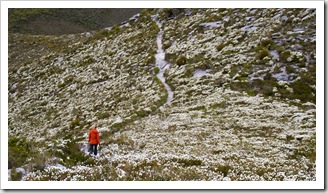
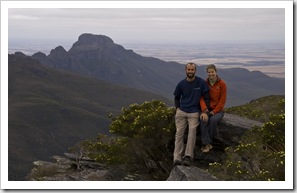 Mountain Bells pictured here, that aren’t found anywhere else in the world. There’s only one campsite in the entire National Park and it was thus pretty packed by the time we rolled in at 4:30PM, the bushland of the Stirling Range is quite dry so we weren’t allowed to have a campfire. Definitely one of our coldest nights in a long time we sought refuge in The Blue Room shortly after the sun disappeared (and the geriatric in the caravan next to us turned off his stinking generator!). Quite a number of the
Mountain Bells pictured here, that aren’t found anywhere else in the world. There’s only one campsite in the entire National Park and it was thus pretty packed by the time we rolled in at 4:30PM, the bushland of the Stirling Range is quite dry so we weren’t allowed to have a campfire. Definitely one of our coldest nights in a long time we sought refuge in The Blue Room shortly after the sun disappeared (and the geriatric in the caravan next to us turned off his stinking generator!). Quite a number of the 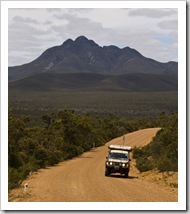 peaks comprising the
peaks comprising the 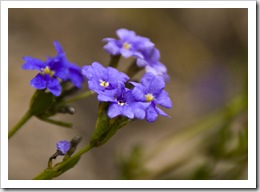 Stirling Range have hiking trails to their summit, we got going early and climbed the tallest of them all: Bluff Knoll. The 675 meter (2215 feet) climb to southern Western Australia’s tallest mountain took us the better part of the morning, tough to dress for the occasion as the steepness of the trail had us sweating heavily at some points while the wind across some of the exposed bluffs was bone-chilling. There were sections of the hike that took us through expansive fields of wildflowers, some areas were so dense that it was like walking through a colored blanket of flowers, just amazing… The views from the top of Bluff Knoll were awe-inspiring, full 360° panoramas of the mountains making up Stirling Range and the surrounding wheat fields. We took the long way out of the park, traversing the Stirling Range Drive across the National Park lengthways, a beautiful area of the country, we’re glad we made the trip inland for the experience.
Stirling Range have hiking trails to their summit, we got going early and climbed the tallest of them all: Bluff Knoll. The 675 meter (2215 feet) climb to southern Western Australia’s tallest mountain took us the better part of the morning, tough to dress for the occasion as the steepness of the trail had us sweating heavily at some points while the wind across some of the exposed bluffs was bone-chilling. There were sections of the hike that took us through expansive fields of wildflowers, some areas were so dense that it was like walking through a colored blanket of flowers, just amazing… The views from the top of Bluff Knoll were awe-inspiring, full 360° panoramas of the mountains making up Stirling Range and the surrounding wheat fields. We took the long way out of the park, traversing the Stirling Range Drive across the National Park lengthways, a beautiful area of the country, we’re glad we made the trip inland for the experience.
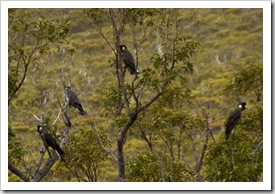
 From the Stirling Range we ventured back toward the coast to spend a couple of days in the bustling port town of Albany and then continued west toward Esperance. The number of white sandy beaches along the stretch of coast between Albany and Esperance is just amazing, anyone who doubts that Australia has the most beautiful beaches in the world should visit the coastline of The Great Southern. The visitor information bureau in Albany suggested we explore Two Peoples Bay and Betty’s Beach on the way to Esperance, the road to which is a dirt track veering off the South Coast Highway about 30 kilometers east of Albany. Two Peoples Bay
From the Stirling Range we ventured back toward the coast to spend a couple of days in the bustling port town of Albany and then continued west toward Esperance. The number of white sandy beaches along the stretch of coast between Albany and Esperance is just amazing, anyone who doubts that Australia has the most beautiful beaches in the world should visit the coastline of The Great Southern. The visitor information bureau in Albany suggested we explore Two Peoples Bay and Betty’s Beach on the way to Esperance, the road to which is a dirt track veering off the South Coast Highway about 30 kilometers east of Albany. Two Peoples Bay 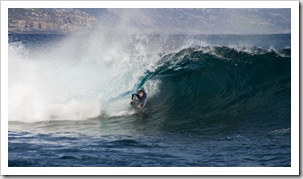 is a stretch of a few kilometers of beautiful white sand, hemmed in
is a stretch of a few kilometers of beautiful white sand, hemmed in 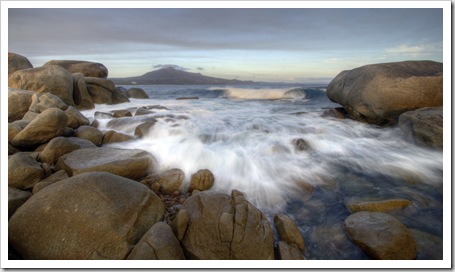 by granite peaks at the western end and rocky granite reef to the east. Lisa went for a long walk on the beach (and got stung be a bee!) while I spent an hour or so snorkeling at the eastern end of the bay, after which we grabbed some lunch and then headed over the hill to the more protected
by granite peaks at the western end and rocky granite reef to the east. Lisa went for a long walk on the beach (and got stung be a bee!) while I spent an hour or so snorkeling at the eastern end of the bay, after which we grabbed some lunch and then headed over the hill to the more protected 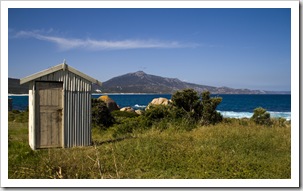 Betty’s Beach (S34°56.211′ E118°12.513′). Betty’s is a collection of old iron sheds perched overlooking a beautiful cove, some of the shacks have been left to ruin and others maintained by locals from Albany for weekend
Betty’s Beach (S34°56.211′ E118°12.513′). Betty’s is a collection of old iron sheds perched overlooking a beautiful cove, some of the shacks have been left to ruin and others maintained by locals from Albany for weekend  trips. It was a fantastic spot, we enjoyed watching some local teens get barreled by a very sucky little break in amongst the granite rocks on the edge of the beach before eating dinner overlooking the beach and mountains in the distance. The sunset and waves crashing into the tide pool made for some pretty awesome water photos…
trips. It was a fantastic spot, we enjoyed watching some local teens get barreled by a very sucky little break in amongst the granite rocks on the edge of the beach before eating dinner overlooking the beach and mountains in the distance. The sunset and waves crashing into the tide pool made for some pretty awesome water photos…
 On the recommendation of Elizabeth and Barrie Smith at Frankland Estate we took a 60 kilometer detour from the South Coast Highway to the holiday town of Bremer Bay. The town is tucked behind Point Henry, the orientation of which ensures that there’s always a secluded beach to be found somewhere within 10 minutes of town. We explored the peninsula between Point Henry and Bremer Bay, stopping off for a swim at Little Boat Harbour on the easterly side. I had no idea that coral existed in the cold
On the recommendation of Elizabeth and Barrie Smith at Frankland Estate we took a 60 kilometer detour from the South Coast Highway to the holiday town of Bremer Bay. The town is tucked behind Point Henry, the orientation of which ensures that there’s always a secluded beach to be found somewhere within 10 minutes of town. We explored the peninsula between Point Henry and Bremer Bay, stopping off for a swim at Little Boat Harbour on the easterly side. I had no idea that coral existed in the cold 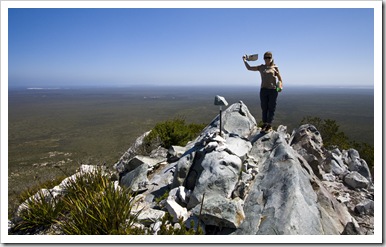
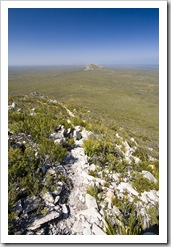
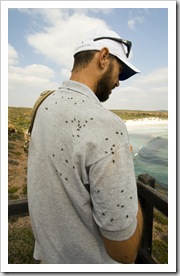 waters of the Southern Ocean but about 50 meters offshore and 10 meters deep I was surprised to see some beautiful hard and soft coral, amazing colours and so many fish buzzing about.
waters of the Southern Ocean but about 50 meters offshore and 10 meters deep I was surprised to see some beautiful hard and soft coral, amazing colours and so many fish buzzing about.
Preferring to stick with campsites rather than caravan parks for as long as possible, we left Bremer Bay behind (in Western Australia you will never find a campsite within 17 kilometers of a town) and made our way along back roads to the edge of Fitzgerald River 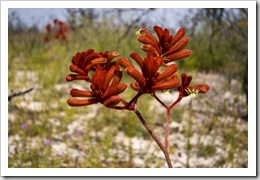
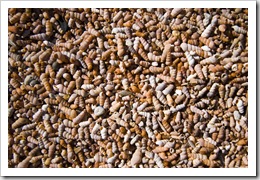 National Park. Lisa was in the mood for some more mountains after our hike in
National Park. Lisa was in the mood for some more mountains after our hike in 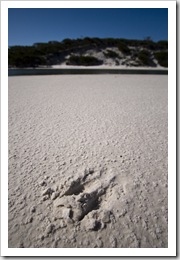 the Stirling Range so we stopped off to climb the tallest peak in the area, East Mount Barren. We were rewarded with some brilliant panoramic views of the coastline from up on high. There’s one campsite in the southern section of Fitzgerald River National Park at Saint Mary’s Inlet, we stopped for the night at yet another extremely well-equipped campsite run by the
the Stirling Range so we stopped off to climb the tallest peak in the area, East Mount Barren. We were rewarded with some brilliant panoramic views of the coastline from up on high. There’s one campsite in the southern section of Fitzgerald River National Park at Saint Mary’s Inlet, we stopped for the night at yet another extremely well-equipped campsite run by the 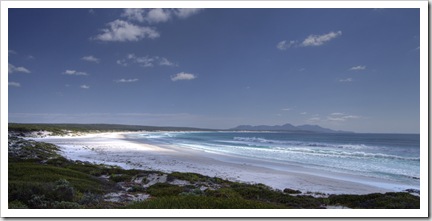 Department of Environment and Conservation (this one had free gas BBQ and burners, toilets and secluded level campsites nestled amongst the trees surrounding the waters of the inlet). In the morning we took a walk to the tip of nearby Point Ann, the southerly beginning of the famous (or infamous…) Rabbit Proof Fence constructed in the 19th century in a failed attempt to halt the spread of introduced rabbits west across the Australian mainland. Today all that’s left are some old fence posts and rusted sections of mesh fence, but an interesting piece of history all the same. The flies in Fitzgerald River National Park were some of the worst we’ve experienced, I think it was the first time we broke out our fly nets since Gregory National Park all the way back in July! Some beautiful wildflowers dotted across the landscape of the National Park, not the brilliant fields we saw in the Stirling Range but some great examples of Kangaroo Paw and other brightly coloured specimens.
Department of Environment and Conservation (this one had free gas BBQ and burners, toilets and secluded level campsites nestled amongst the trees surrounding the waters of the inlet). In the morning we took a walk to the tip of nearby Point Ann, the southerly beginning of the famous (or infamous…) Rabbit Proof Fence constructed in the 19th century in a failed attempt to halt the spread of introduced rabbits west across the Australian mainland. Today all that’s left are some old fence posts and rusted sections of mesh fence, but an interesting piece of history all the same. The flies in Fitzgerald River National Park were some of the worst we’ve experienced, I think it was the first time we broke out our fly nets since Gregory National Park all the way back in July! Some beautiful wildflowers dotted across the landscape of the National Park, not the brilliant fields we saw in the Stirling Range but some great examples of Kangaroo Paw and other brightly coloured specimens.
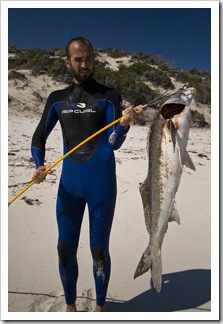
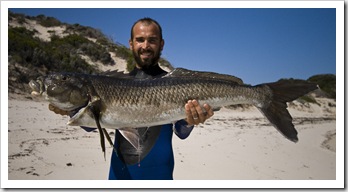 For our last night of camping in The Great Southern we stayed at Munglinup Reef (S33°53.211′ E120°48.338′), roughly 100 kilometers west of the port town of Esperance. The reef bends around a small peninsula, the easterly portion a deep and quite rough stretch of ocean while the western side is protected by a long barrier of rocks making for a fantastic snorkeling and swimming spot. It was so calm that Lisa even wanted to get in for a dip! Lisa called me over to take a look at an Eagle Ray she’d found underwater when the Morwong pictured here flew past and I happened to have my spear drawn, I landed him in the side of the head and Lisa’s now going to be eating fish for the better part of a month! Definitely the biggest
For our last night of camping in The Great Southern we stayed at Munglinup Reef (S33°53.211′ E120°48.338′), roughly 100 kilometers west of the port town of Esperance. The reef bends around a small peninsula, the easterly portion a deep and quite rough stretch of ocean while the western side is protected by a long barrier of rocks making for a fantastic snorkeling and swimming spot. It was so calm that Lisa even wanted to get in for a dip! Lisa called me over to take a look at an Eagle Ray she’d found underwater when the Morwong pictured here flew past and I happened to have my spear drawn, I landed him in the side of the head and Lisa’s now going to be eating fish for the better part of a month! Definitely the biggest 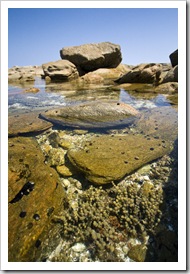 fish I’ve ever landed on spear or line, it was so heavy I struggled to get it out of the water and it bent my spear head whilst I was carrying it. I wasn’t sure what type of fish it was until asking master fisherman Matt Little, luckily it has some nice white flesh and Lisa has been enjoying it for dinner for the past few nights.
fish I’ve ever landed on spear or line, it was so heavy I struggled to get it out of the water and it bent my spear head whilst I was carrying it. I wasn’t sure what type of fish it was until asking master fisherman Matt Little, luckily it has some nice white flesh and Lisa has been enjoying it for dinner for the past few nights.
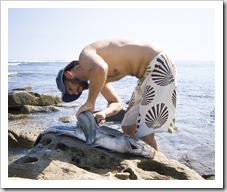 It’s back off into some arid country from here for us as we begin our way across the Nullarbor Plain, we’ll definitely hold the southwestern corner of Western Australia (Margaret River, The Southern Forests and The Great Southern) fondly in our memories. Such a brilliant portion of the country with so much to experience. Time and time again we were taken aback with the awesome campground facilities provided by Western Australia’s Department of Environment and Conservation: always with toilets, the occasional shower, wood provided if campfires are allowed… And the shire campsites provided by the towns of Albany and Esperance at places like Betty’s Beach and Munglinup Reef were also awesome, some of the best campsites we’ve visited anywhere so far. The fact that we had most of the spots to ourselves made it all the more fantastic.
It’s back off into some arid country from here for us as we begin our way across the Nullarbor Plain, we’ll definitely hold the southwestern corner of Western Australia (Margaret River, The Southern Forests and The Great Southern) fondly in our memories. Such a brilliant portion of the country with so much to experience. Time and time again we were taken aback with the awesome campground facilities provided by Western Australia’s Department of Environment and Conservation: always with toilets, the occasional shower, wood provided if campfires are allowed… And the shire campsites provided by the towns of Albany and Esperance at places like Betty’s Beach and Munglinup Reef were also awesome, some of the best campsites we’ve visited anywhere so far. The fact that we had most of the spots to ourselves made it all the more fantastic.
This entry was posted on Wednesday, December 2nd, 2009 at 9:00 AM and is filed under Australia, Western Australia, Wines. You can follow any responses to this entry through the RSS 2.0 feed. Both comments and pings are currently closed.
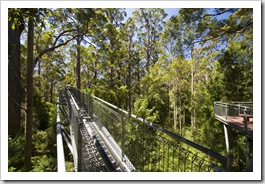
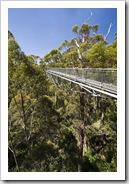
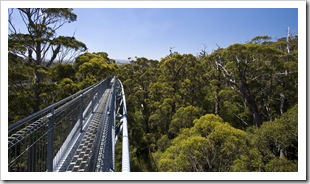
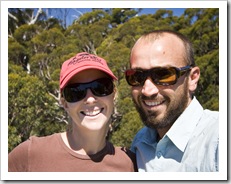
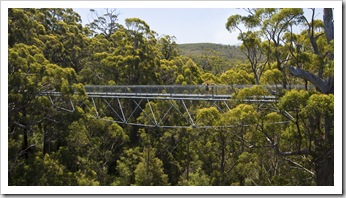
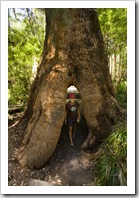
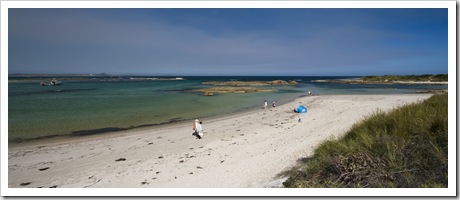
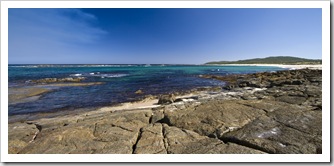
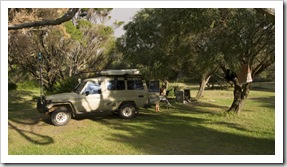
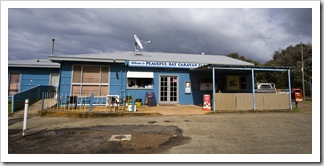
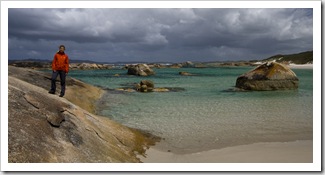
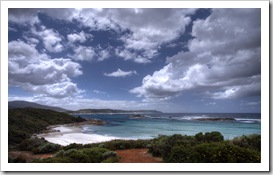
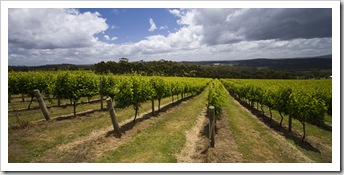
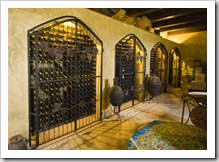
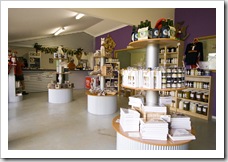
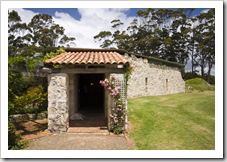
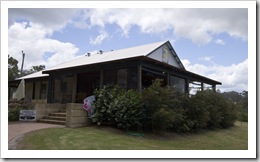
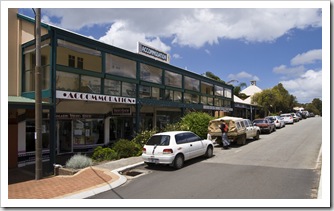
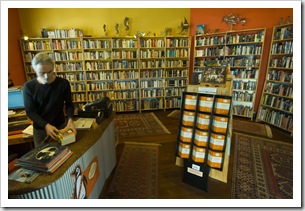
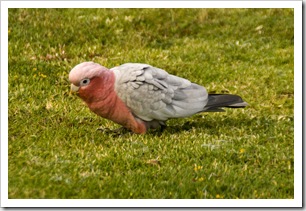
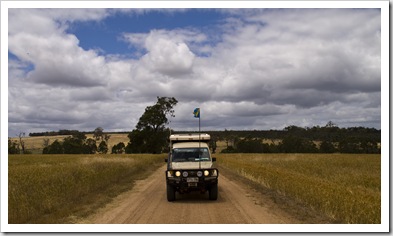
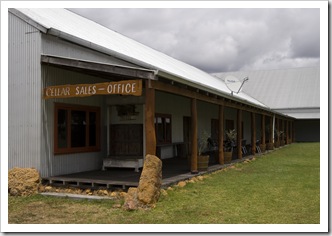
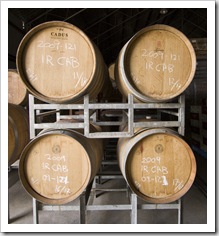
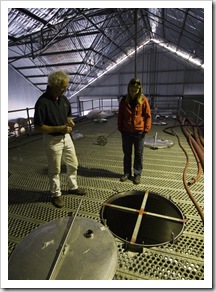
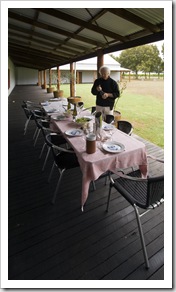
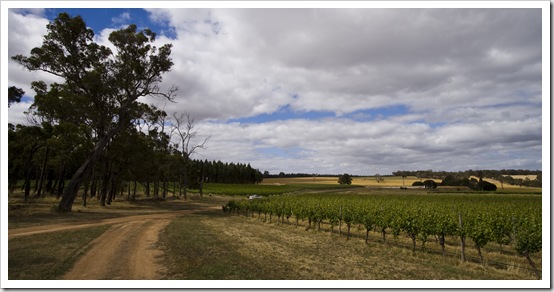
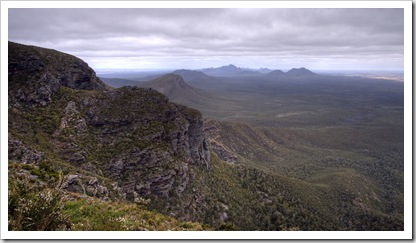
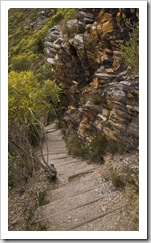
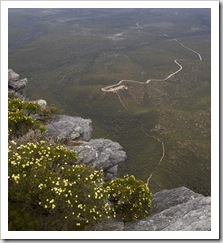
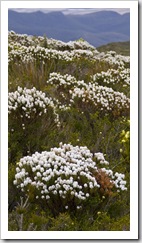

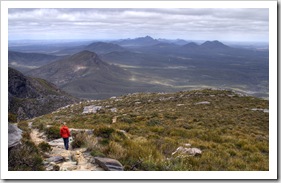
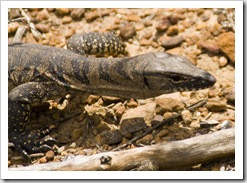
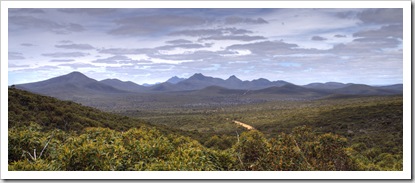
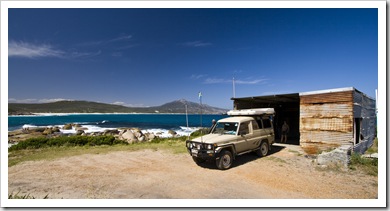
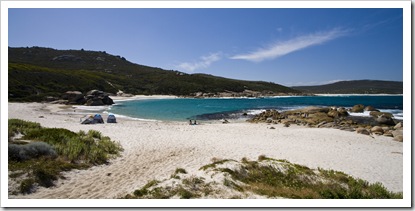
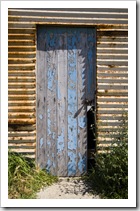
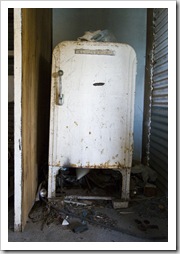
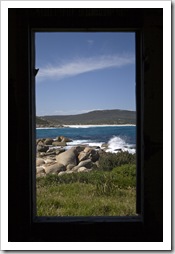
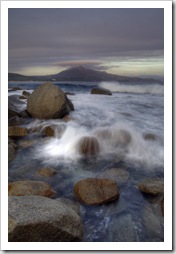
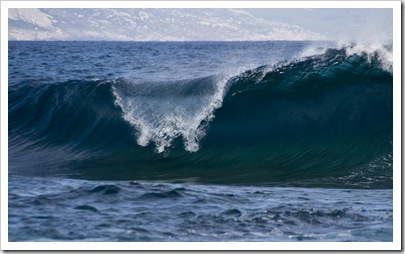
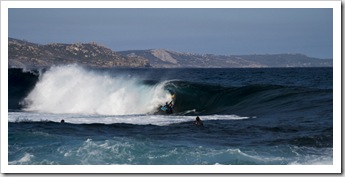
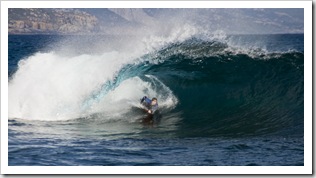
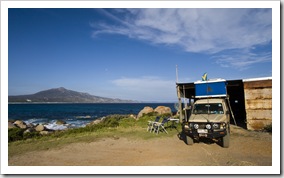
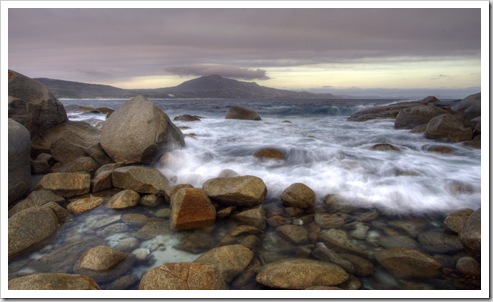

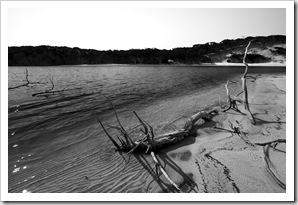
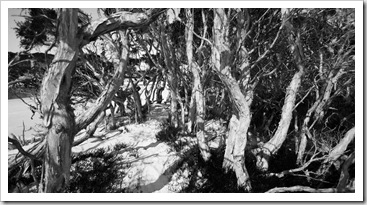
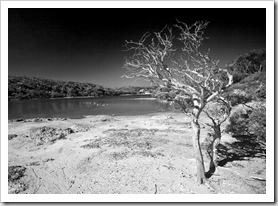
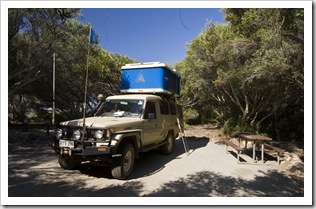
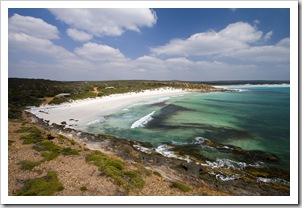
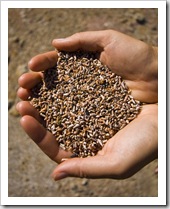
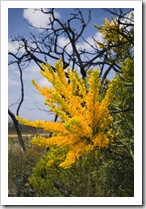
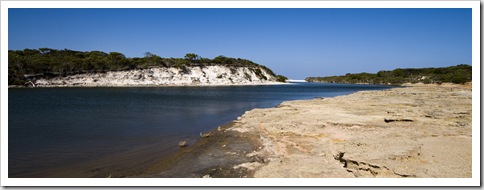
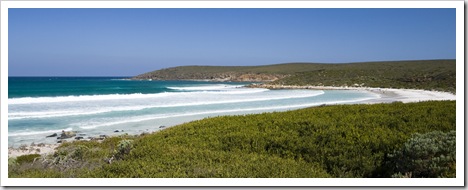
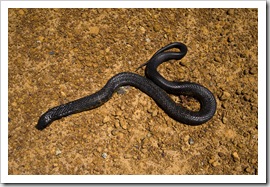
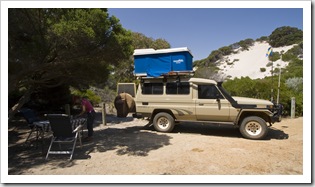
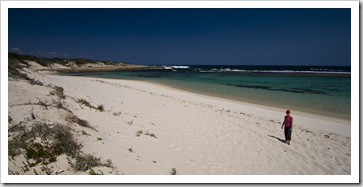
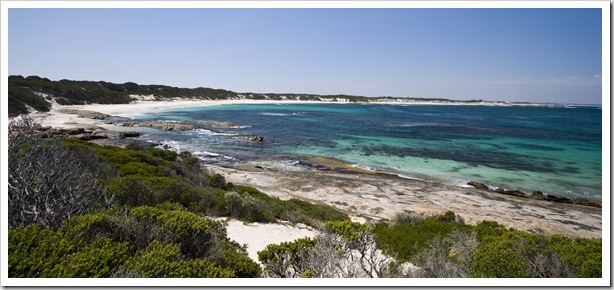
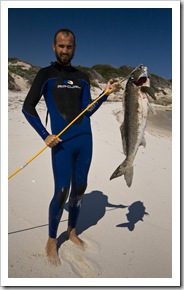
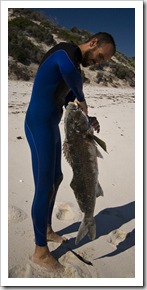

[…] the Otway Fly treetop walk, a similar adventure to the Giants Treetop Walk in Western Australia’s Great Southern. After seeing that it was $22 each to walk along the suspended boardwalks we decided against […]
March 10th, 2010 at 8:23 AM
[…] of dinners. We originally met Wade and Michelle when I got Wade hooked on spear fishing at Peaceful Bay in Western Australia, then ran into them again when crossing the Nullarbor Plain, and again when we […]
May 25th, 2010 at 3:30 PM
Hey Guys,
Still find myself reading through your blog, Vaults could you email me back so I have your email and details. I Re-booted my computer the other day and lost all my email data.
Hope your well,
Harksy.
February 11th, 2011 at 7:38 PM